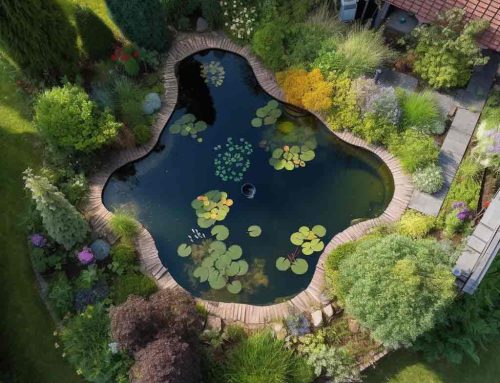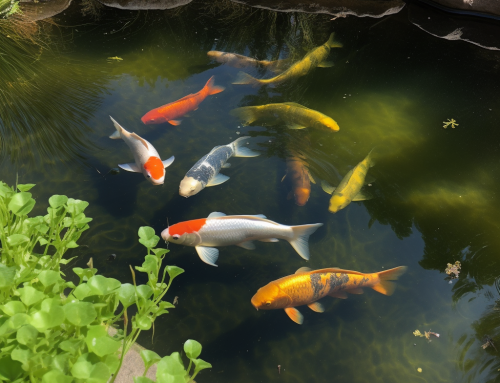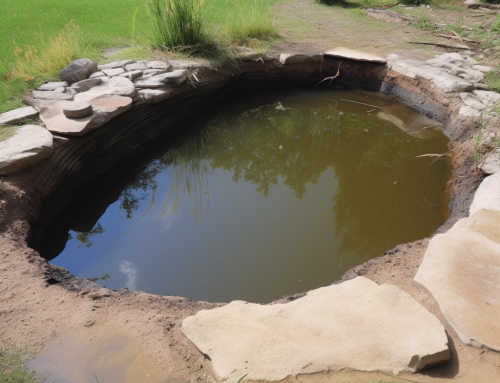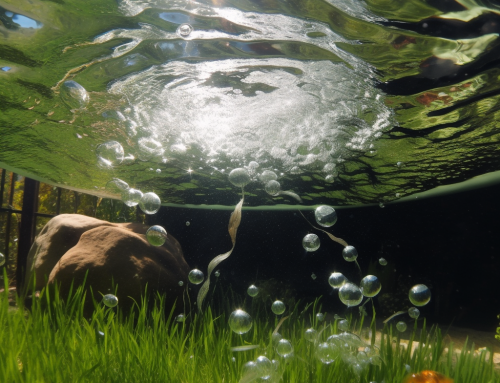
What to Do with a Dead Fish in Your Pond: Proper Disposal and Removal
Nothing can ruin the tranquil beauty of a pond faster than the sight of a dead fish floating on the water’s surface. Dead fish in ponds can not only create an unpleasant visual but can also lead to other issues that threaten the pond’s health. Proper removal and disposal of dead fish is essential to maintain a healthy pond environment. In this set of questions and answers, we’ll explore various aspects of dealing with dead fish in ponds, from why dead fish need to be removed to the science behind fish decomposition. We’ll also provide tips for preventing fish loss and minimising the risk of pollutants that can harm your fish. Whether you’re a seasoned pond owner or new to the hobby, this information will help you maintain a healthy and thriving pond for years to come. There are many reasons why pond fish might die, and sadly it is inevitable. Often summer pond overheating or lack of water oxygenation can cause issues, but steps such as adding oxygenating pond plants can help long term.
What to do with dead fish in pond?
When a fish dies in a pond, it’s important to remove it as soon as possible. Dead fish in the pond can be a breeding ground for bacteria and parasites that can cause other fish to become sick. It is also a good idea to keep an eye on the other fish in the pond and look for signs of illness or disease.
There are several options for disposing of a dead fish. You can bury it in the ground, but make sure to bury it deep enough to prevent other animals from digging it up. Alternatively, you can put it in a compost bin or use it as garden fertiliser. If you don’t want to dispose of the fish yourself, some municipalities offer dead fish pickup services.
Should dead fish be removed from pond?
It’s important to remove dead fish from a pond as quickly as possible. Dead fish can cause problems for the pond’s water quality and can lead to an increase in algae and bacteria growth. They can also be a breeding ground for parasites that can infect other fish. If you notice a dead fish in your pond, remove it immediately and monitor the other fish for any signs of illness.
What happens if you don’t remove a dead fish?
If a dead fish is left in a pond, its body will begin to decompose, releasing bacteria and toxins into the water. This can cause a host of problems, including poor water quality and the spread of disease to other fish in the pond. The decomposition process can also cause unpleasant odors and attract insects and other pests to the area.
Do dead pond fish float or sink?
When a fish dies, it usually sinks to the bottom of the pond. However, as the body decomposes, gases are produced that can cause the fish to float back to the surface. This is because the gases produced by the decomposition process are less dense than water and cause the fish to become buoyant. If a fish is left in the water for too long, it will eventually begin to break down and release bacteria and toxins into the water.
Do I need to change water after dead fish?
When a fish dies in a tank, it’s important to remove it as soon as possible and perform a water change. This will help to remove any excess waste and pollutants that may be released from the decomposing fish. It’s also a good idea to test the water quality and adjust it if necessary to ensure the remaining fish are in a healthy environment.
Can fish grieve death?
While fish may not grieve death in the way humans do, they can experience stress and anxiety when a fellow fish dies. This is because the dying fish releases stress hormones into the water, which can be detected by the other fish. In some cases, fish may also exhibit unusual behaviour or show signs of depression after a companion’s death. However, it’s important to note that fish do not have the same emotional capacity as humans and may not exhibit the same level of grief or mourning.
Summary
- Proper removal and disposal of dead fish is essential to maintain a healthy pond environment
- Dead fish in ponds can pose health hazards, affect aesthetic appeal, and threaten the pond’s overall health
- Quick removal of dead fish can prevent further harm to the pond’s ecosystem








